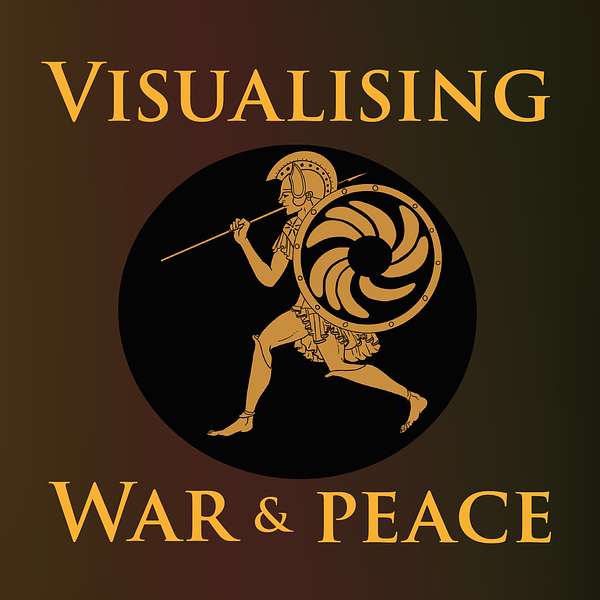
Visualising War and Peace
How do war stories work? And what do they do to us? Join University of St Andrews historian Alice König and colleagues as they explore how war and peace get presented in art, text, film and music. With the help of expert guests, they unpick conflict stories from all sorts of different periods and places. And they ask how the tales we tell and the pictures we paint of peace and war influence us as individuals and shape the societies we live in.
Visualising War and Peace
A short tour of our virtual Museum of Peace
In this episode, Alice introduces the Visualising Peace project's virtual Museum of Peace. (To listen to the tour with a set of images showcasing some of the museum's contents, please follow this link.)
Alice begins by outlining the wider research questions which members of the Visualising Peace team have been exploring:
- What recurring stories do individuals and communities tell about war’s aftermath, conflict resolution, peace and peace-building in art, text, film, photography, news reports, museums, music, sculpture, gaming, and other such media?
- Are narratives of peace always constructed in relation to narratives of war? And what (if anything) makes any given narrative identifiable as a ‘peace story’?
- Whose narratives or ideas of peace dominate in different parts of the world, and why?
- And what role can peace-storytelling play in peace-building?
As she explains, we are surrounded by images and narratives of war, but much less 'literate' in peace and peace-building. Our virtual museum aims to make a modest contribution to wider efforts to render peace-making more visible, more discussed, and better understood, by generating more conversation about what peace looks like to each of us. Our aim is to harness the power of story-sharing to illuminate different habits of visualising peace and their influence (actual or potential) on how it is experienced, promoted, created and sustained.
Our project is both disruptive of entrenched habits and generative of new or different ways of thinking about, and working towards, peace. By juxtaposing a myriad – or a kaleidoscope – of different manifestations of peace, we aim to question, challenge and stretch assumptions and interpretative frameworks; and we hope that our array of ‘exhibits’ not only helps to make peace more visible and more broadly understood but also more tangible and realisable in the everyday.
In the podcast, Alice tours listeners through a range of items in each virtual room, highlighting the diversity of media and perspectives. She reflects on the ethics of visualising peace for others, and also on the importance - and challenges - of incorporating different voices and experiences. The museum was conceived as a collaborative project, and Alice encourages museum visitors to offer feedback and suggestions for new items to include in the museum.
As she explains, the structure of the museum encourages visitors to explore open-mindedly, and we hope that each visit to the museum represents an ongoing process of critical discovery of possibly endless conceptualisations. The ideas and images of peace that we have curated are not to be taken didactically; they merely offer an opening to further reflection and inquiry. We do not wish this project to be seen as the be-all and end-all of how one should or could visualize peace. Rather, it is a metaphorical call to (lay down) arms in a collaborative, open-ended exploration of prevailing habits and alternative ways of picturing, framing, evoking and engendering peace, through many different lenses. Inclusive conversation on this topic is important because peace is conceived and made by all of us, not just by experts.
We hope you enjoy this tour of our peace museum. For a version of our podcast with images and close captions, please use this link. You can find out more about the Visualising Peace project on our website.
Music composed by Jonathan Young
Sound mixing by Zofia Guertin